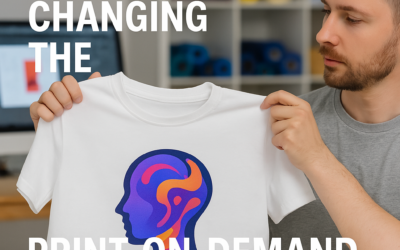How Automation and AI are Driving the Next Wave of 3D Printing
The manufacturing world is experiencing a revolutionary shift thanks to the powerful combination of automation, artificial intelligence (AI), and 3D printing. For small businesses looking to innovate and improve efficiency, this dynamic trio is transforming production, reducing costs, and opening exciting new opportunities.
The Evolution of 3D Printing
Originally known as additive manufacturing, 3D printing has come a long way since its early days in the 1980s. What began as a tool for rapid prototyping has now expanded into industries like aerospace, healthcare, automotive, and beyond. Today, the integration of automation and AI is opening up a world of new possibilities and redefining the future of production.
Automation: Streamlining the 3D Printing Process
Automation is at the heart of modern 3D printing. By using robotic systems and specialized software, companies can boost efficiency and precision. Here are some key benefits of incorporating automation into 3D printing:
- Increased Speed: Automated systems operate around the clock to significantly cut down production times.
- Consistency and Quality: Reduced human error ensures every part meets high-quality standards.
- Scalability: Easily ramp up production to meet growing customer demand without sacrificing quality.
For example, companies like Stratasys have developed integrated automated solutions that work seamlessly with their 3D printers. This not only boosts productivity but also helps manage labor costs, making it an attractive option for businesses of all sizes.
AI: Enhancing Design and Production
Artificial intelligence is revolutionizing the design process for 3D printing. By analyzing extensive data sets, AI can optimize design parameters for better performance and reduced material waste. Key AI applications include:
- Generative Design: AI generates multiple design alternatives based on specific constraints, helping engineers choose the most efficient solution.
- Predictive Maintenance: Monitoring performance in real-time, AI predicts potential issues before they cause downtime.
- Quality Control: Machine learning algorithms inspect printed parts to catch defects early, ensuring only high-quality products go to market.
One standout example is Siemens, which leverages AI-driven generative design to create lighter and stronger components for gas turbines. This not only enhances product performance but also contributes to overall operational efficiency.
Real-World Success Stories
The integration of automation and AI with 3D printing is already delivering impressive results across various industries:
- Aerospace: Boeing harnesses automated 3D printing to produce lightweight components that reduce fuel consumption and cut costs.
- Healthcare: Companies like Organovo are pioneering bioprinting of tissues, with AI optimizing designs for enhanced functionality.
- Automotive: Ford applies AI in its 3D printing processes to streamline prototyping, accelerating the time-to-market for new parts.
The Future of 3D Printing with Automation and AI
The future looks bright for 3D printing. As automation and AI technologies continue to evolve, small businesses can expect:
- Greater Customization: AI will enable the creation of highly personalized products tailored to individual customer needs.
- Enhanced Sustainability: Automated processes will further reduce waste and energy consumption, making production greener.
- Broader Accessibility: Falling technology costs will make advanced 3D printing methods more accessible to startups and small businesses.
Conclusion
The convergence of automation, AI, and 3D printing is not just a technological trend—it’s a fundamental change in how products are designed and produced. By improving efficiency, ensuring consistent quality, and driving customization, these innovations are setting the stage for a new era in manufacturing. For small businesses aiming to stay competitive in a rapidly evolving market, embracing these advancements could be the key to unlocking future success.



